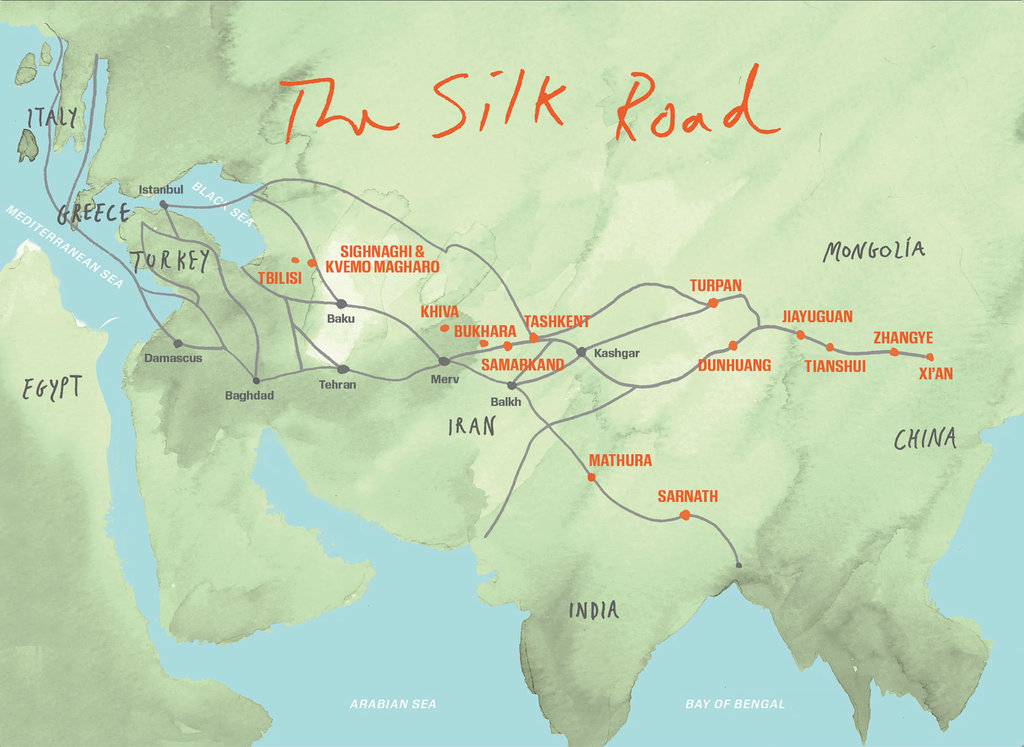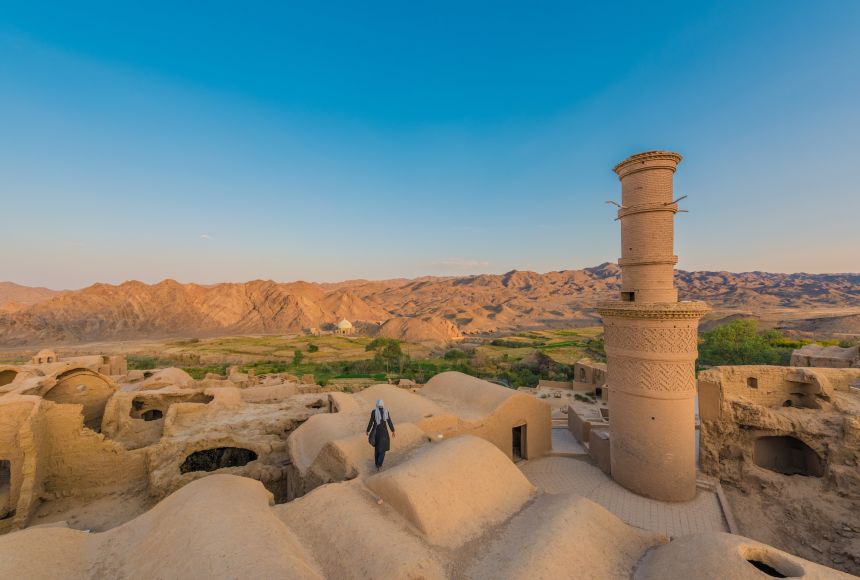The Silk Road was one of the most significant trade networks in history, spanning thousands of miles across Asia, the Middle East, and Europe. This vast and complex network of trade routes played a crucial role in facilitating commerce, spreading cultures, and advancing civilizations. It was not just a means of transporting goods but also a highway for ideas, religions, and innovations.
Merchants, travelers, and scholars traversed deserts, mountains, and cities to exchange not only tangible commodities but also knowledge and traditions. The Silk Road fostered global connections that shaped the development of societies for centuries. From the introduction of paper to the spread of Buddhism, its impact is still evident today. This article explores the origins, routes, trade goods, cultural exchanges, and the eventual decline of the Silk Road in greater detail.

Origins of the Silk Road
The origins of the Silk Road can be traced back to the Han Dynasty (206 BCE – 220 CE), when China sought markets for its luxurious silk. Prior to this period, trade connections existed among early civilizations, but they were fragmented and lacked an established network. The Han Dynasty's expansion and diplomatic missions paved the way for a structured trade route that connected China with Central Asia, the Middle East, and Europe.
-
The Chinese first traded with nomadic tribes and local merchants, eventually expanding their reach to larger empires.
-
The need for exotic goods, such as horses from Central Asia and spices from India, encouraged further expansion.
-
The establishment of safe passage through treaties and military campaigns helped secure trade routes.
-
The Silk Road was named after silk, the most highly sought-after product, but it facilitated the trade of numerous other goods as well.
Major Routes of the Silk Road
The Silk Road consisted of several interconnected routes, each serving different regions and trade needs. It was not a single path but a vast web of trails connecting distant civilizations.
1. The Northern Route
This route passed through Central Asia, crossing present-day Kazakhstan, Uzbekistan, and Turkmenistan. It was one of the most critical arteries for trade between China, Persia, and Eastern Europe.
-
Traders transported silk, porcelain, and paper from China to the West.
-
Central Asian nomads provided horses and other livestock to Chinese merchants.
-
Caravanserais (roadside inns) were established to accommodate traders on their long journeys.
-
Cities like Samarkand and Bukhara flourished as major trade hubs along this route.
2. The Southern Route
This route ran through India, Iran, and the Middle East, linking China with South Asia and the Mediterranean region. It included both overland and maritime trade networks.
-
Goods like cotton, spices, and gemstones were transported from India to China and Europe.
-
Maritime trade flourished along the Indian Ocean, connecting ports from the Arabian Peninsula to Southeast Asia.
-
Buddhist monks traveled along this route, spreading their religion and teachings.
-
The Persian Gulf served as a critical transit point for goods moving between Asia and the Roman Empire.
3. The Central Route
The Central Route traversed the Taklamakan Desert and the Iranian Plateau. This pathway was crucial for moving luxury goods across vast distances.
-
Precious metals, including gold and silver, moved from Persia to China.
-
The route facilitated the exchange of artistic and architectural influences.
-
Harsh environmental conditions made travel perilous, but caravan networks ensured trade continued.
-
Technological advancements, such as the use of camels for transportation, improved efficiency.
Goods Traded on the Silk Road
Trade on the Silk Road was highly diverse, involving various valuable commodities that shaped economies and cultures. Some of the most sought-after products included:
|
Goods |
Origin |
Destination |
|---|---|---|
|
Silk |
China |
Europe, Middle East |
|
Spices |
India, Southeast Asia |
Middle East, Europe |
|
Precious Metals |
Persia, Rome |
China, India |
|
Paper |
China |
Middle East, Europe |
|
Porcelain |
China |
Middle East, Europe |
|
Horses |
Central Asia |
China |
|
Textiles |
Persia, India |
China, Europe |
-
The demand for silk was so high that it became a form of currency in some regions.
-
Spices such as pepper, cinnamon, and cloves were essential for food preservation and medicine.
-
Paper, which originated in China, transformed writing and record-keeping across civilizations.
-
Porcelain was highly prized in Europe, leading to the development of European ceramic industries.
Cultural Exchange and Influence
The Silk Road was more than just a network of trade routes; it was a bridge between civilizations, facilitating a rich cultural exchange that shaped the ancient world. As merchants, travelers, and scholars moved across Asia, the Middle East, and Europe, they carried not only goods like silk, spices, and precious metals but also ideas, religions, languages, and artistic styles. Buddhism spread from India to China, Islamic influences reached Central Asia, and Greek and Roman artistic traditions merged with Persian and Indian motifs. Scientific knowledge, such as advancements in medicine, mathematics, and astronomy, also traveled along these routes, enriching diverse societies. The Silk Road played a crucial role in connecting cultures, fostering mutual influence, and laying the groundwork for globalization long before the modern era..
Religious Diffusion
The Silk Road played a vital role in the diffusion of religions, shaping spiritual landscapes across continents. Buddhism, originating in India, spread to China, Korea, and Japan through missionary efforts and translated scriptures. Islam expanded from the Middle East into Central Asia and South Asia, influencing local cultures and governance. Christianity also found its way eastward, reaching parts of Persia and even China through Nestorian missionaries. Alongside these major faiths, Zoroastrianism, Manichaeism, and other belief systems traveled with merchants and pilgrims, blending with local traditions. The Silk Road thus became a conduit for religious diversity, fostering interfaith exchanges that influenced religious practices and beliefs across regions..
Technological and Scientific Exchange
The Silk Road was a catalyst for technological and scientific exchange, enabling the spread of innovations that transformed societies. Chinese inventions such as paper-making and printing techniques reached the Middle East and Europe, revolutionizing communication and education. The knowledge of silk production and advanced agricultural techniques also spread along these routes. From the Islamic world, advancements in medicine, mathematics, and astronomy, including the works of scholars like Al-Khwarizmi and Avicenna, traveled to Europe, influencing the Renaissance. Additionally, Indian numerals, which later evolved into the modern decimal system, were transmitted through Arab traders. This exchange of knowledge along the Silk Road laid the foundation for scientific progress across civilizations..

Decline of the Silk Road
The decline of the Silk Road was a gradual process influenced by several economic, political, and technological factors. One of the primary reasons was the rise of maritime trade routes in the 15th century, which provided a faster and more efficient means of transporting goods between Asia and Europe. With the advancements in shipbuilding and navigation, European explorers, particularly the Portuguese and Spanish, established sea routes that reduced reliance on the overland Silk Road. Additionally, the fall of the Mongol Empire, which had once ensured the safety and stability of the Silk Road, led to increased political fragmentation and insecurity. As various regions along the route became embroiled in conflicts and power struggles, trade became more dangerous and less profitable. The spread of the Black Death in the 14th century also played a significant role, as the pandemic disrupted commerce and led to a decline in population, further weakening demand for long-distance trade. Furthermore, the expansion of the Ottoman Empire in the 15th century led to tighter control over key trade routes, restricting European access to Asian goods. As a result, European nations sought alternative routes to Asia, accelerating the decline of the Silk Road. By the 16th century, the once-thriving network of trade and cultural exchange had largely diminished, giving way to new global trade systems driven by maritime exploration and colonial expansion.
Key Takeaways
-
The Silk Road was a vast trade network connecting Asia, the Middle East, and Europe.
-
It enabled the exchange of goods, cultures, and ideas that shaped history.
-
Its decline was caused by the rise of maritime trade, political instability, and disease outbreaks.
-
Its legacy continues to inspire modern trade and globalization.
The Silk Road remains one of the most remarkable achievements in human history, demonstrating the power of connectivity and cooperation across vast distances.





.gif)















Sign in
to continue to ilmkidunya.com